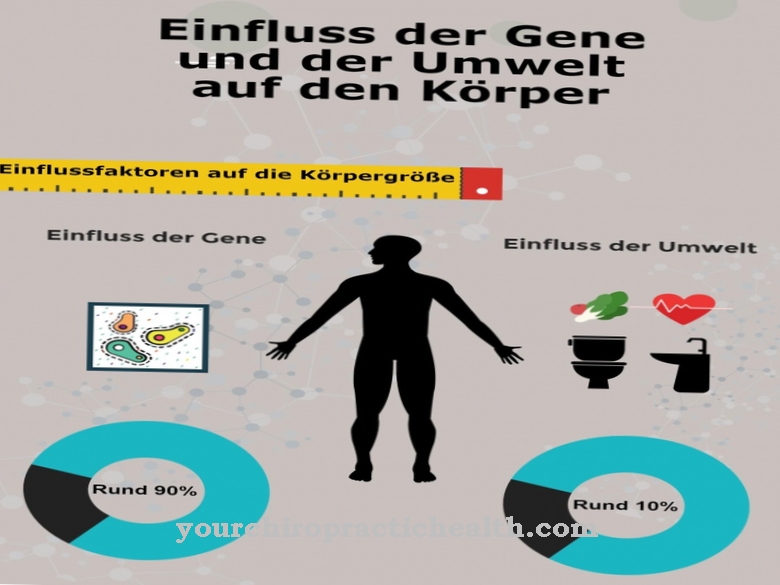The E cigarette is on the rise and is becoming increasingly widespread. No wonder, because vaping is considered to be a far less harmful alternative to conventional smoking. But are the electronic cigarettes really healthier than the classic cigarette? And what risks does the trendy vaping entail?
That is why e-cigarettes are less harmful than cigarettes

Smoking, which is a serious health hazard, has long been deeply anchored in consciousness. The great potential for harm in conventional cigarette consumption can be traced back to the tobacco combustion process, which creates thousands of substances, several hundred of which are considered to be toxic or even carcinogenic. More and more tobacco companies have also recognized the signs of the times and are offering alternative tobacco products.
After Philipp Morris (with Iqos) and British American Tobacco (with Glo), Japan Tobacco International, which is primarily known for its cigarette brands such as Winston and Camel, is trying to gain a foothold on the Swiss market, with their product Ploom Tech means. With this new type of e-cigarette, granulated tobacco is only heated to 30 degrees using steam, but no smoke, smell or ash is produced. According to Japan Tobacco International, Ploom Tech achieves "a reduction in the substances analyzed by up to 99 percent compared to cigarette smoke", but it still contains tobacco. The Swiss Federal Office of Public Health, on the other hand, recommends completely giving up smoking tobacco cigarettes and recommends switching to e-cigarettes if you cannot or do not want to give up smoking in other ways.
Because with an e-cigarette, no tobacco is used and thus no tobacco burning takes place. It therefore seems logical that long-term use is less harmful than long-term use of conventional cigarettes.
It should be noted, however, that there are of course no long-term studies on the consumption of e-cigarettes, which have only been on the market for a few years. But the German Cancer Research Center (DKFZ) also points out that e-cigarettes are less harmful, as no tar is created when steaming. In addition, the Federal Institute for Risk Assessment (BfR) emphasizes that compared to cigarettes, there are no “characteristic carcinogenic combustion products” with e-cigarettes. According to a study by Public Health England, electronic cigarettes are rated 95 percent less harmful than conventional cigarettes.
Thus, it can be said that vaping can be seen as a healthier alternative to smoking, but that does not mean that you should start vaping cheerfully without considering losses. At the same time, the DKFZ warns against taking the potential dangers of e-cigarettes lightly and playing it down.
Aerosol contains fewer pollutants, but ...
Here it is important to take a close look at the exact components of the liquids. Liquids are the liquids that are put into the cartridge of the e-cigarette and heated by an electrical heating element (nebuliser). When you pull on the mouthpiece, the liquid nebulises and aerosol is inhaled - but no smoke like a classic cigarette. The aerosol actually contains significantly fewer pollutants, but is not free of pollutants.
In addition to inflammation-promoting and irritating substances, it can also contain carcinogenic substances. This primarily refers to acetaldehyde and formaldehyde, which are produced when the liquids are heated. These can irritate skin and mucous membranes, damage the airways and cause cancer.
The main component of the liquids is propylene glycol or glycerine. This is a fogging agent that is also known, for example, from the disco (disco fog). And this vapor can cause irritation to the eyes and respiratory tract, although it is not known what consequences can be expected from long-term exposure to this substance.
In addition to distilled water and ethanol, the liquid also contains nicotine and usually various aromatic substances. Nicotine is known to cause physical and psychological dependence, especially as former smokers may have experienced when attempting to quit. When vaping, nicotine gets into the brain almost as quickly as when smoking a normal cigarette, so that the e-cigarette is also highly addictive. For this reason alone, the electronic cigarette must not be played down. However, it should be emphasized that there are nicotine-free liquids on the market!
Usage behavior when vaping is a decisive factor
However, according to the DKFZ, every consumer influences the concentration of pollutants such as formaldehyde and acetaldehyde through their usage behavior when vaping. Because this depends among other things on the battery strength. With newer models of e-cigarettes, it is often possible to vary the battery voltage. The voltage with which the ignition wire is heated can be individually adjusted. The following rule of thumb applies:
The higher the voltage, the higher the temperature and the more steam is generated. More vapor means a higher release of more nicotine and more pollutants. Consuming 3 milliliters of liquid with an e-cigarette creates around 14 milligrams of formaldehyde, which is 5 to 14 times the amount compared to smoking 20 cigarettes.
In addition, the length of time a vaporizer is used also affects the release of chemicals such as formaldehyde, acetaldehyde and acrolein. The longer the vaporizer in the e-cigarette is used, the more pollutants are released. Therefore, when vaping, it is essential to ensure that the vaporizer is changed regularly.
Does vaping make it easier to get started with smoking?
The selection of liquids for e-cigarettes is extremely diverse. In addition to classic tobacco flavors, there are also a number of variants with sweet flavors such as apple or chocolate. This promises a welcome change when vaping, but at the same time, especially sweet aromas can be very attractive to children and adolescents, who can become addicted to nicotine. The consequence can be that in this way the entry into tobacco smoking is given.
In addition, the variety of liquids with their different aromatic substances makes it difficult to make a general statement about the health risks of the e-cigarette, since the various studies on the harmfulness of the e-cigarette can hardly be compared with one another. Because some flavorings such as diacetyl, which has a sweet-butter-like taste, can cause severe inflammation of the respiratory tract when inhaled, while other fragrances and preservatives such as cinnamaldehyde or benzyl alcohol can trigger a contact allergy.
E-cigarette as a good alternative for smokers
In conclusion, it should be noted that the (permanent) consumption of an electronic cigarette is less harmful compared to a classic tobacco cigarette according to the current status. The risk of cancer is reduced, and the nicotine content of the liquids can be reduced relatively easily and gradually when vaping, so that the e-cigarette can also be used as an effective means to finally break away from the smoldering stalk or nicotine dependence.
E-cigarettes are certainly a good alternative for smokers, but especially for non-smokers or occasional smokers it is not a harmless lifestyle product, but a product with a potential hazard. In addition to nicotine (insofar as it contains), the heated aromas in the liquids pose a health risk, about the long-term effects of which we know too little. In addition, individual usage behavior ultimately has a major influence on how harmful an e-cigarette is.

















.jpg)



.jpg)

.jpg)




